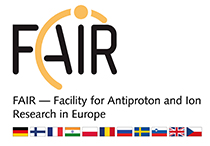Nuclear reaction (e.g., MNT) studies and synthesis of isotopes with low-energy RIBs
Radioactive ion beams at Coulomb barrier energies will open a wide field for the study of deep-inelastic reactions of heavy nuclei and their application for the synthesis of new heavy and superheavy exotic isotopes. Deep inelastic reactions are characterized by a large amount of energy dissipation, a large flow of nucleons between the interacting nuclei and a noticeable time delay in the reaction - in contrast to direct, or quasi-elastic, reactions. Typical examples are deep inelastic transfer, quasi-fission or complete fusion. Experiments in this field can be divided in two main groups: (i) Study of the process of deep inelastic reactions, starting with the mutual capture of projectile and target nucleus up to the formation of certain residual nuclei and (ii) If favorable reactions were discovered in the reaction studies, applications of such reactions for the production of new exotic isotopes would be possible. Such a study is considered to be one of the long-term goals.
At the Super-FRS, the possibility for a systematic study of the different steps of deep-inelastic reactions will open in a wide range of projectile isospin, binding energy, deformation and other degrees of freedom as well as the influence of shell effects. The information obtained from such a systematic study is decisive for the advancement of theoretical models which describe the process of deep inelastic reactions.
One of the important goals is to find suitable reactions or find new reactions for the production of neutron-rich as well as neutron-deficient trans-uranium nuclides (Z>92) and eventually superheavy elements which are not accessible in fragmentation reactions or in fusion reactions with stable beams.
The Super-FRS will offer the option of “cocktail” beams which will allow for the efficient use of the relatively small radioactive ion beam intensities for certain experiments.
A presently unique feature of the LEB of Super-FRS is the energy buncher, which can be applied to significantly reduce the relatively large energy spread of the beams after deceleration to Coulomb barrier energies by degrader wedges.
Amoung the different approaches to make use of these capabilities are:
- The TOF-E detection system CORSET from JINR Dubna will be used for the study of deep inelastic transfer, quasi-fission and fusion-fission. An upgraded version of CORSET would allow a significantly larger solid angle to be covered.
Reaction studies at intermediate energies (50...300 MeV/u), where the LEB energy-buncher/spectrometer provides precise momentum analysis of the outgoing, projectile-like reaction product, for instance in nucleon transfer or knock-out reactions which provide nuclear-structure information or in charge-exchange reactions to study the spin-isospin response of exotic nuclei or to determine matrix elements of neutrino-less double-beta decay candidates.
- Exotic isotopes can be produced inside the cryogenic stopping cell (CSC) of the Super-FRS by nuclear reactions between a beam and a target nucleus or by decay of the beam nuclide inside the stopping volume of the CSC. These open new opportunities to study production and decay properties by identifying and counting the products with a high resolution broadband mass spectrometer, like the multiple-reflection time-of-flight mass spectrometer of MATS. Reactions can be studied with one or several solid targets inside the stopping volume or by using the stopping gas as target itself. The CSC offers the possibilities to store the ions for seconds inside the stopping volume, so the thermalized ions can decay and their decay products is measured. Thereby it is possible to determine properties such as half-lives, branching ratios and delayed particle emission.

